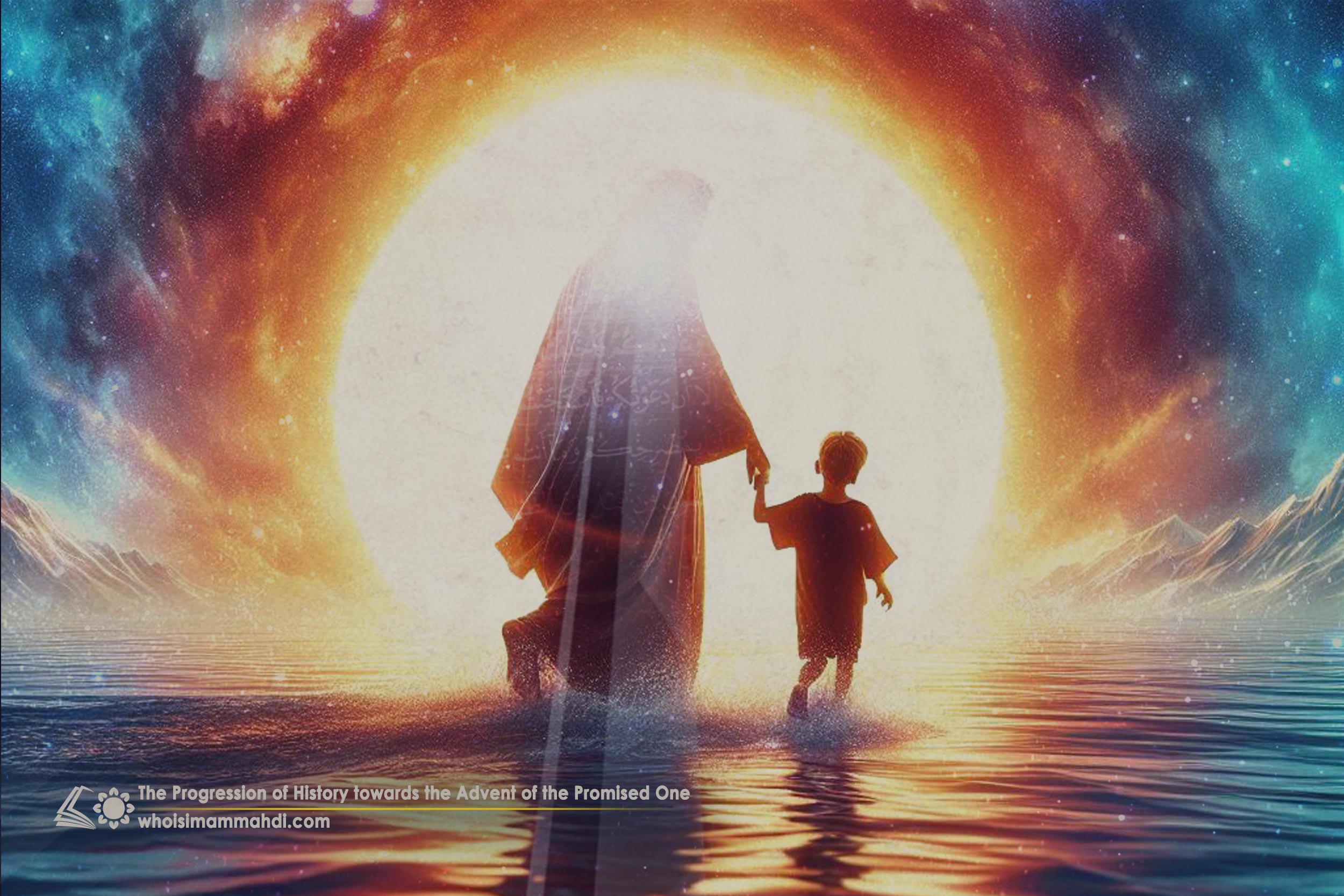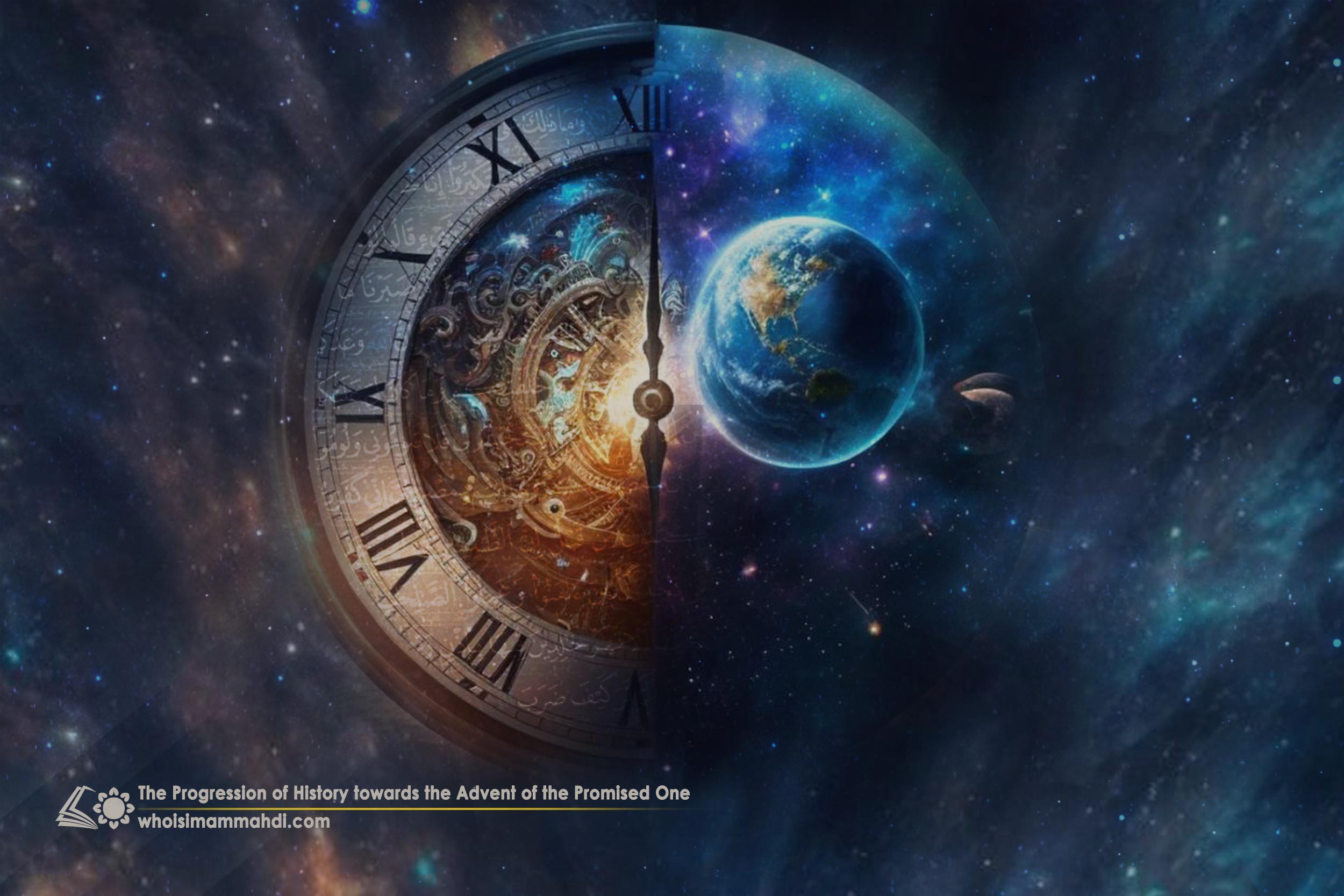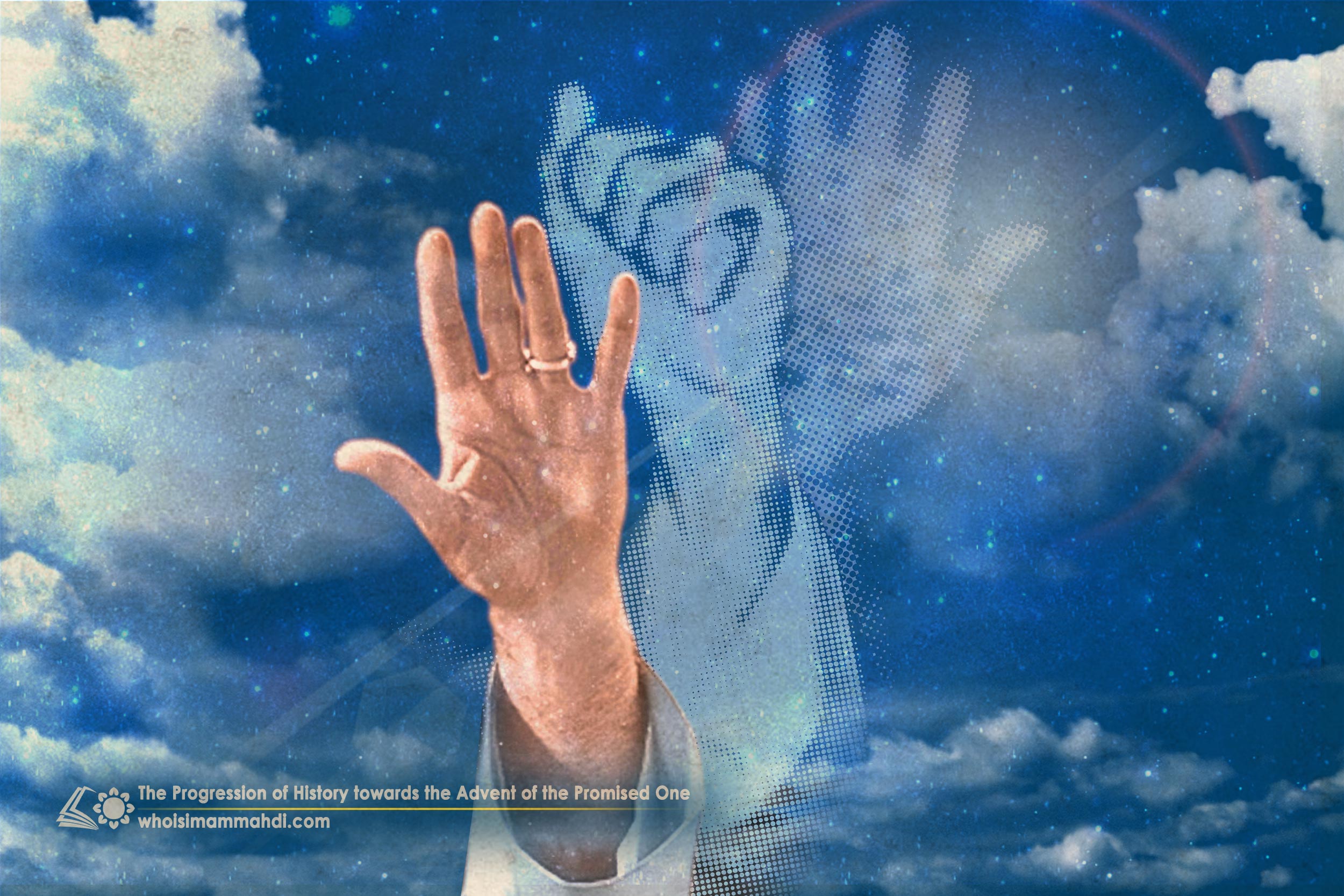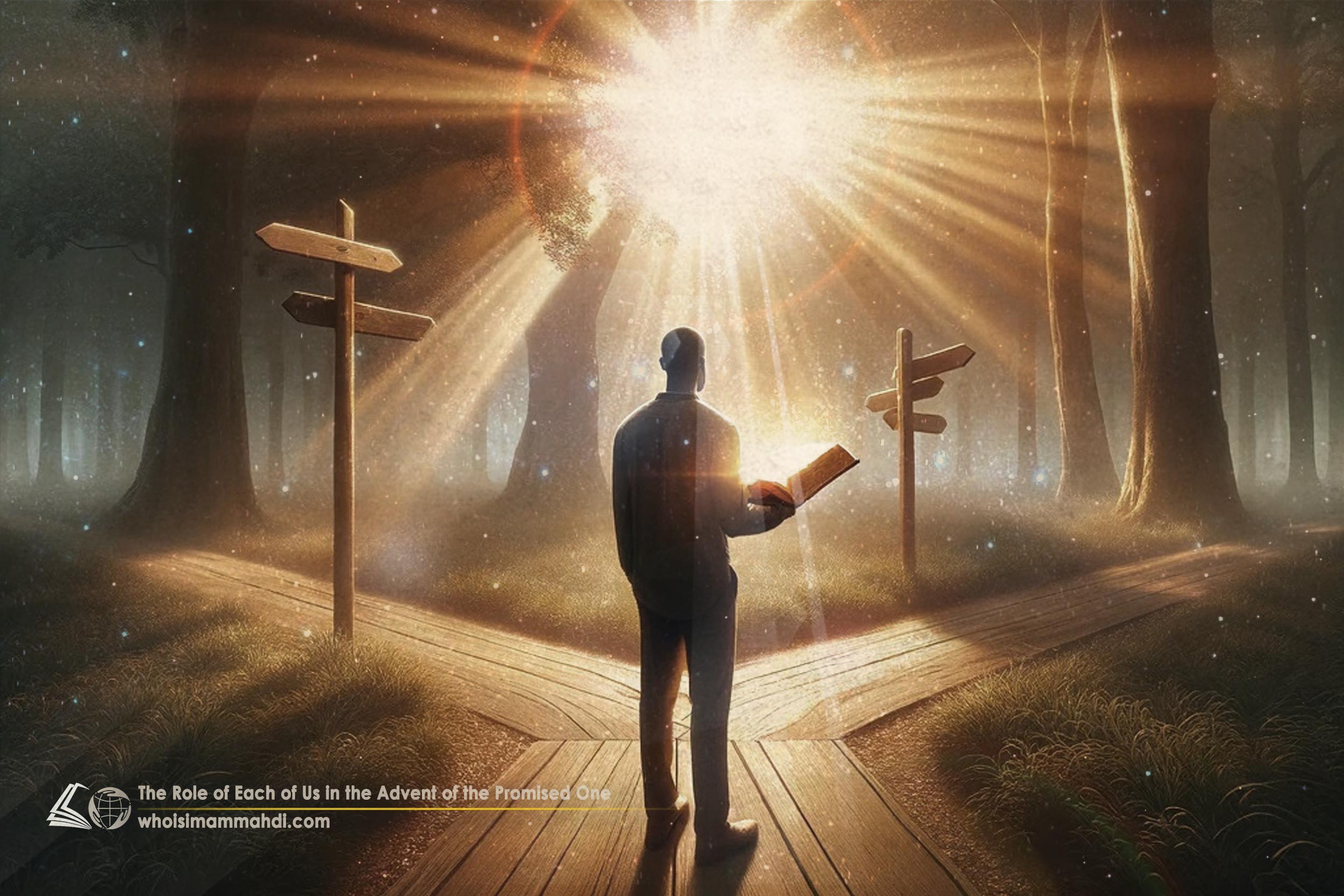What Did the Infallibles Do to Strengthen the Role of Iranians in the Future?
Perhaps you have also wondered what the role of Iranians in the future of the world is and how people in the future will remember this nation. Can they, like the Golden Age of Islamic civilization, have a significant impact on the future world, or is the influence and role of Iranians in the future of the world is only limited to that era? Survival and immortality through influencing the future is the desire of many humans. This effort is evident both individually in the lives of geniuses and famous people, and collectively in the efforts of nations to play a role in the world. Despite all the bitter and unpleasant events that have gripped people around the world for centuries, the future of the earth ends with the Noble Rule of the Righteous in which there will be no war, violence, oppression, and cruelty. However, the point here is that such a bright future will not come into existence on its own, and it certainly requires planning and preparation. In fact, we need individuals who strive to shape such a future. The question is, ‘What is the role of Iranians in the future of the world, and how can we be part of those who prepare the ground for the fulfillment of this bright future?’
In this series of articles, we have talked about a nation that is mentioned in many verses of the Quran. This nation will come and faithfully cause the downfall of the arrogant, handing over the earth to its true heirs who are currently oppressed in the world.[1] We stated that according to narrations and interpretations offered by the infallible Imams, this nation is Iranians. Therefore, the role of Iranians in the future of the world is very important, and this nation has been chosen from the beginning of history for this purpose. But a question arises here, ‘What arrangements have they made to strengthen Iranians to properly fulfill this historical duty?’
The Relationship Between Religion and Understanding the Future
We mentioned that humans are created for servitude to God,[2] and servitude is the only path for humans to become similar to Him. In examining the verses of the Quran, we found that our guide and mentor for achieving this goal was created even before our creation, and our life plan was given to him.[3] Since the creation of Adam, God has devised a plan for creating an Islamic society which enables human beings to fulfill the purpose of creation, and all prophets have followed this plan. However, as we also mentioned in the previous articles, an infallible expert can bring us closer to the purpose of our creation, similarity to God, and our true status, only if he possesses the power to rule and influence.
In other words, establishing an Islamic society without Islamic leadership is not possible, and for this reason, the main responsibility of all prophets and the Infallibles[4] was to create a sense of hope for the future and strive to establish divine governance. During the time of Prophet of Islam (PHUH), this concern and effort reached its peak to the point that from his perspective, religion has never been a temporary or short-term process but a continuous and future-oriented one. In the Prophet’s worldview, religion is nothing but having a positive understanding of the future and striving to build that future.[5] Since the time of the last prophet, specific plans and strategies have been designed to shape this future as soon as possible, and this is clearly visible in the lifestyle of the infallible Imams. However, the way that the Imams have worked to achieve this goal has changed over time, depending on the political and social situation they were in, but it has been one of their short-term or long-term goals, without exception.
Due to the necessity and importance of establishing an Islamic government, the Prophet of Islam (PBUH) seriously focused on planning for this long-term goal and laid the foundations for creating this government from the very beginning of his mission. It is obvious that one of the prerequisites for this duty is to train and strengthen righteous individuals who, in addition to the ability to eliminate arrogance and tyrants, possess the necessary skills in the nine pillars of civilization. These pillars include politics, culture, economy, education, medicine, industry, art, architecture, and military power. Based on the verses of the Quran and numerous reports and narrations on this subject and according to what we discussed about understanding religion and shaping the future, the role of Iranians in the future of the world is to establish an initial model of the new Islamic civilization.
Planning for the Future
We usually come to a comprehensive understanding of a subject by examining it from various aspects. Therefore, it is not only necessary to delve into the individual actions of each Imam regarding strengthening the role of Iranians in the future, but it is also essential to consider the Infallibles as a unified entity or a 250-year-old person and evaluate their general policies in this regard.
Given the importance and necessity of establishing an Islamic government, the Prophet (PBUH) and other Infallibles (PBUT) have addressed the role of Iranians in the future at different times and have strengthened them in various situations. Of course, creating a bright future for the world without the rule of tyrants and unjust rulers is a big job that requires long-term effort and planning. Since in this historical change of direction, the role of Iranians is pivotal, the Infallibles prioritized two important strategies in this regard. These strategies are observable both in their insight on this matter and in their practical policy.
In fact, alongside planning for a bright future for the world, the Infallibles constantly talked to people about the great Iranian empire, its related news, and the results of the Islamic Revolution. In addition, they brought themselves closer to Iranians so that Iranians could have a greater influence in terms of cultural, social, political, and religious matters. Although after the martyrdom of Imam Reza (PBUH), the eighth infallible Imam, the issue of establishing an Islamic government entered its long-term phase. The Infallibles, who were fully aware of this process, paid special attention to strengthening Iranians as righteous individuals who were supposed to do the groundwork for establishing an Islamic government in the distant future. The Islamic Revolution, which is considered one of the most important prerequisites for the establishment of an Islamic government, is introduced in dozens of narrations mentioned by Prophet Muhammad and other Infallibles (PBUT) with three important characteristics:
– First, it is founded on truth.
– Second, it will definitely be victorious.
– Third, it will give the flag to Imam Mahdi (PBUH).
The Role of Each of the Infallibles (PBUT) in Strengthening Iranians
– The Era of Prophet Muhammad (PBUH)
From the very beginning, the Prophet (PBUH) consciously defined the religion with a global, future-oriented perspective,[6] centered around the concept of waiting for the advent of Imam Mahdi. This strategic approach was aimed at ensuring the perpetuation of the religion of Islam and its eventual culmination in the advent of the Imam. He brought Iranian companions closer to himself, talked about them, and defended them in various situations. For example, in the Hadith[7] Miraj (Ascension), he explains why the city of Qom was named as such by stating that its people will be companions of the Qa’im (one who will rise up). Sending Imam Ali (PBUH) to Yemen, which was considered a significant part of the Iranian Empire at that time and would play an undeniable role in fulfilling the advent of Imam Mahdi (PBUH), is a crucial part of Prophet Muhammad’s planning to strengthen the role of Iranians in the future of the world for establishing an Islamic government. This is because, with the blessing of Imam Ali’s presence, a large number of Iranians became Shia, and besides creating a lasting emotional relationship, a strong Shia base among the faithful and strong people of Yemen was set up.
-The Leadership Era of Imam Ali (PBUH)
During the leadership era of Imam Ali (PBUH), one of his significant actions to strengthen the role of Iranians in the future was establishing the capital of his caliphate in Kufa,[8] which was considered the closest location to the border of Iran. By moving to Kufa instead of staying in Medina and dealing with hypocritical people who hindered his work, Imam Ali chose a place whose people understood and accepted his message. He started to train manpower at the border of Iran and sent many of his close companions and descendants to Iran, establishing connections with Iranians and creating a strong cultural atmosphere in the country. Moving the capital of caliphate to Kufa led to a large number of loyal followers of Imam Ali being Iranians. In addition, Imam Ali (PBUH) talked about Qom during his leadership and considered this city as the house of the family of Prophet (PBUT),[9] stating that the companions of Imam Mahdi (PBUH) would be from this city.
-The Leadership Era of Imam Hasan, Imam Hussain, and Imam Sajjad (PBUT)
The efforts to strengthen the role of Iranians in the future continued during the leadership era of Imam Hassan (PBUH) as well. Also, Imam Hussain (PBUH) deepened this relationship through marriage with an Iranian woman and his journey to Iran. The love for being under the guardianship of an infallible Imam was so strong in Iranians that there were Iranian people among the seventy-two companions of Imam Hussain (PBUH) in the Battle of Karbala and in Mukhtar Thaqafi’s army. This closeness continued during the time of Imam Sajjad (PBUH), as he considered himself the son of the two chosen groups[10] according to the Prophet (PBUH): The Quraysh and the Iranians.[11]
–The Leadership Era of Imam Baqir and Imam Sadiq (PBUT)
The relationship between Iranians and the Imams reached its peak during the time of Imam Baqir and Imam Sadiq (PBUT). These two Imams strengthened the city of Qom by sending many scholars and students from their followers to enhance the Seminary (Hawzah) there. There are records indicating that Imam Sadiq (PBUH) trained around four thousand students and emphasized the importance of Qom as a cultural center that would play a significant role in the future. This influence was so profound that in Kitab Al-Ghaybah by Nu’mani, written during the minor occultation of Imam Mahdi (PBUH), it is mentioned that Imam Baqir (PBUH) detailed the stages of the Islamic Revolution, highlighting that:
- “It is based on the truth.
- All its dead ones are martyrs.
- They are people who never surrender until they hand over the flag to its rightful owner.”
Or in another narration he says:
“If I had (the opportunity to) witness that (time), I would have preserved myself for the master of this matter (i.e., the Imam Mahdi).”[12] This indicates the short time between the Islamic Revolution and the advent of Imam Mahdi (PBUH).
Furthermore, during this period, the Imams often instructed their children and close companions to travel to Iran and engage in cultural activities in this secure base. The impact of these actions and the establishment of this relationship was such that the graves of martyred descendants of the Imams became cultural and civilizational centers among Iranians.
-The Leadership Era of Imam Kazim (PBUH)
Following the activities of Imam Sadiq and Imam Baqir (PBUT) in strengthening the role of Iranians in the future, it was Imam Kazim’s (PBUH) turn. Imam Kazim (PBUH) addressed more explicitly the dimensions and characteristics of the Islamic Revolution, the qualities of the leader of this Revolution, and its connection to the advent of Imam Mahdi (PBUH). In a hadith about the Islamic Revolution, he stated: “A man from the people of Qom will call the people to the truth; men like pieces of iron will gather around him; the storms will not shake them; they do not get weary of war, nor do they show cowardice, and they rely on Allah, and the good end is for the pious.”[13]
This hadith signifies that Imam Kazim (PBUH) recognized a powerful figure from Qom who would lead a movement characterized by unwavering faith and fearlessness, ultimately leading to a significant impact on the future of Iran.
In this article, we discussed the importance of establishing an Islamic society as a long-term goal set by the Prophet and other Infallibles (PBUT). Creating an Islamic society requires the formation of an Islamic government led by individuals with certain qualifications, and they are from the Iranian Empire according to narrations. Therefore, the Infallibles, at different times, focused on strengthening the role of Iranians in the future by telling news related to the Iranian Empire and the Islamic Revolution and creating situations to communicate with Iranians. Strengthening the role of Iranians in the future can be seen both in the individual life and practice of each member of the Household of Prophet (PBUT) and in their general policies as a unified entity and a 250-year-old human being.
[1]. “But We desired to favor those who were oppressed on earth, and to make them leaders, and to make them inheritors.” (Quran, 28:5)
[2]. ubudiyyah
[3]. “The Most Compassionate, taught the Quran, created humanity,” (Quran, 55:1-3)
[4]. The Fourteen Infallibles include Prophet Muhammad, his daughter, and the twelve Holy Imams
[5]. “Verily in this is a (great) message for a people devoted to worship.” (Quran, 21:106)
[6]. “He is the One Who has sent His Messenger with [true] guidance and the religion of truth, making it prevail over all others, even to the dismay of the polytheists.” (Quran, 9:33)
[7]. A hadith is a narrative record of the sayings or customs of Prophet Muhammad and his Household
[8]. A city in Iraq
[9]. “Qom is the abode of the family of Muhammad and the refuge of their Shia.” -Imam Kazim
(Allama Al-Majlisi. Bihar al-Anwar, Vol. 57).
[10]. Allama Al-Majlisi. Bihar al-Anwar, Vol. 46.
[11]. Ibid. “ And he was called the son of the two chosen ones because of the saying of the Messenger of Allah (PBUH): ‘Verily, Allah has two chosen ones among His servants, one from the Arabs, and they are the Quraysh, and one from the non-Arabs, and they are the Persians.’”
[12]. Jafar al-Nu’mani. Kitab Al-Ghaybah, p. 383.
[13]. Allama Al-Majlisi. Bihar al-Anwar, Vol. 57.






































































